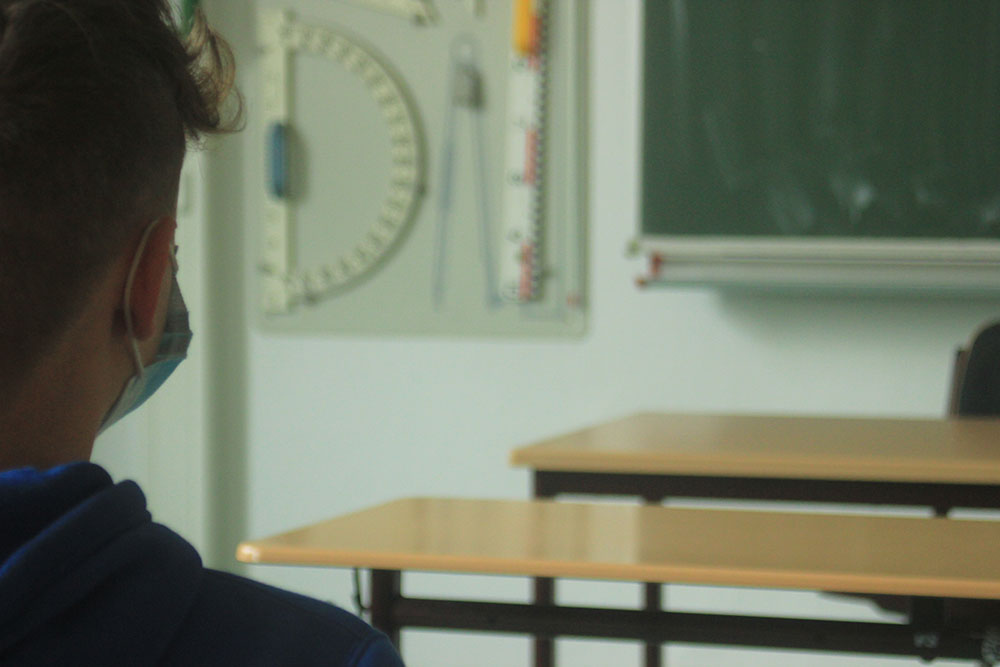Desks in rows with students facing the front of the room. Teachers providing lots of direct instruction. Students spending plenty of time doing individual practice work in their own desks.
No, we did not travel back to the 1950s. This is what many classrooms look like today during the COVID-19 pandemic.
It’s not a bad thing either. In fact, it is a good thing.
To be clear, no one is happy that we are in the middle of a COVID-19 pandemic, nor should we be. Keeping students physically apart throughout the day takes a herculean effort. Not only that, but most high school students cannot attend school every day, which makes it more likely they will fall between the cracks.
Nevertheless, COVID-19 is the hand schools have been dealt. We have no choice but to make the most of it. Fortunately, there is plenty of evidence that traditional teaching methods are beneficial for students.
That’s because not only do traditional classrooms make it easier for schools to follow health regulations, they are also better for student learning.
There is, in fact, no shortage of evidence to support this claim.
Jeanne Chall was a professor in the Harvard Graduate School of Education and director of the Harvard Reading Laboratory for more than 30 years. In her final book, “The Academic Achievement Challenge: What Really Works in the Classroom,” Chall compared the effectiveness of progressive education with traditional education.
Her conclusion is relevant and it is clear:
“Traditional, teacher-centred schools, according to research and practice, are more effective than progressive, student-centred schools for the academic achievement of most children.”
Not surprisingly, a great deal of research has been conducted on what effective lessons look like. Teachers need to clearly explain new concepts, model how to solve problems, give students multiple opportunities to practice skills they need, and make sure students have mastered the concept or skill before moving on to the next level.
Simply put, teachers should make regular use of traditional, whole-class, teacher-centred, teaching methods.
 In contrast, teachers in progressive classrooms are expected to adapt their instruction to the so-called learning styles of every student. But, as Chall pointed out, this is virtually impossible, and an inefficient way to teach because each student receives only a small amount of direct instructional time each day since each lesson needs to be geared for each student.
In contrast, teachers in progressive classrooms are expected to adapt their instruction to the so-called learning styles of every student. But, as Chall pointed out, this is virtually impossible, and an inefficient way to teach because each student receives only a small amount of direct instructional time each day since each lesson needs to be geared for each student.
Not only that, the notion of individual learning styles itself is nothing more than a discredited fad. The American Psychological Association even has an official statement on its website that there is no scientific evidence for the existence of learning styles.
While some might argue that learning styles is a harmless myth, the reality is that this fad has caused significant damage to students. Far too often, instead of providing well-designed whole class lessons, teachers waste vast amounts of time trying to adapt to the so-called learning styles of their students.
Fortunately, for teachers who have always wanted to set up their classroom in a more traditional way but were prevented from doing so by progressive school administrators, the COVID-19 pandemic gives them the opportunity to do so.
Not only will this keep students and teachers safer, but it will also help students learn more too.
Michael Zwaagstra is a public high school teacher and a research fellow with the Frontier Centre for Public Policy.
Photo by Maximilian Scheffler on Unsplash



